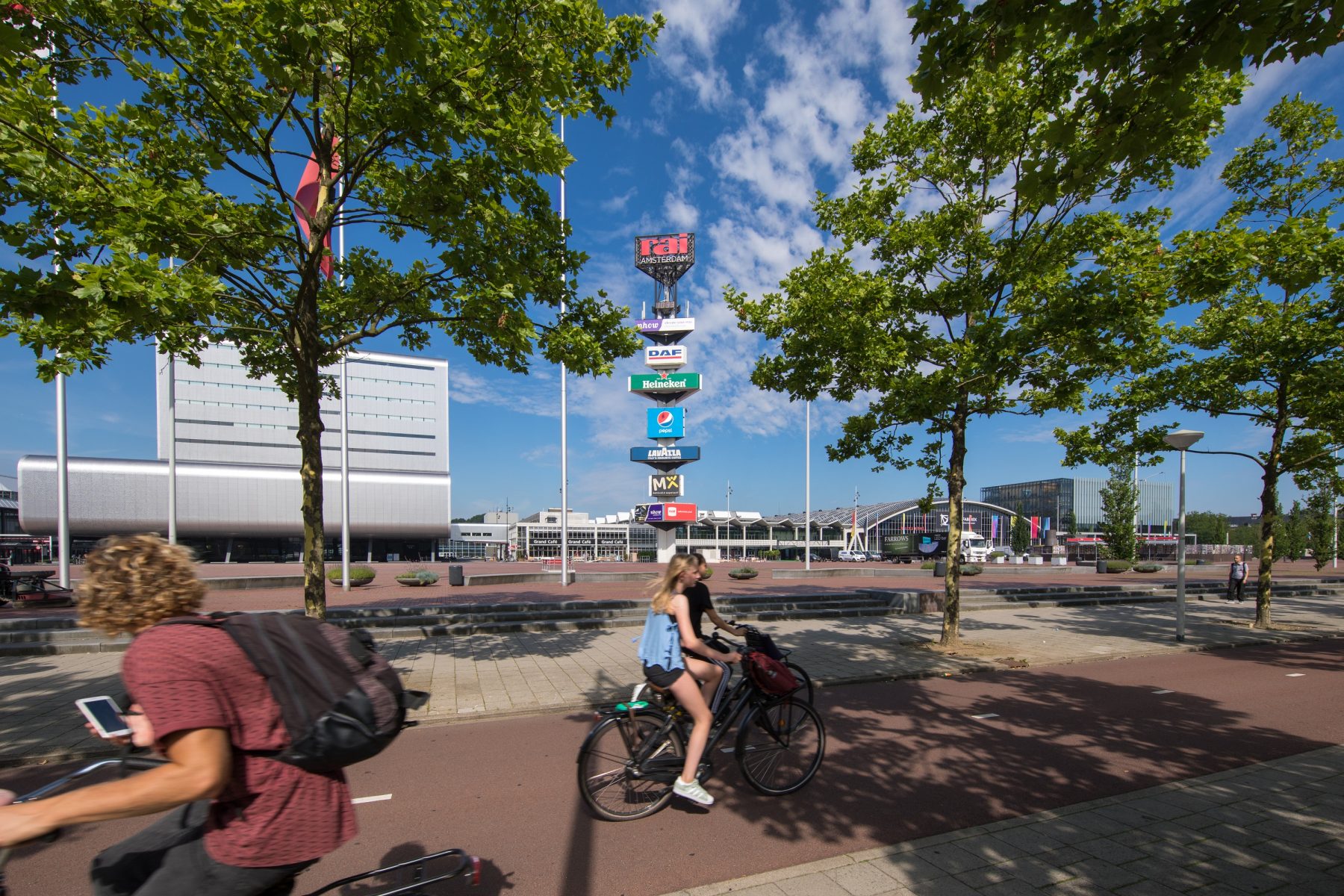Take people from Zuidas, people from RAI and an architect, put them in front of a city map, arm them with markers and stickers and watch them go! The group enthusiastically devised a multitude of new perspectives. Buildings were razed to the ground at the stroke of a pen and rebuilt somewhere completely different. A huge bridge materialized over the A10 orbital motorway and a brand-new logistical hub was devised. Architect Mels Crouwel was particularly trigger-happy, peppering the map with stickers, lines and arrows to give the area around the RAI a completely new look. ‘Quality is paramount’, he emphasized, ‘and make sure everything is a coherent whole. You can’t just add features at a whim.’
RAI: bringing people together
Connection of the RAI area is becoming more and more important. In the past, the site was more or less on the edge of the city, though the arrival of Zuidas has really made it a part of the city and the opening of the Noord/Zuid metro line will make the region even busier. Furthermore, Nhow Amsterdam RAI – the biggest hotel in the Benelux – is currently under construction right next door to RAI. Everyone in attendance agreed that RAI must become more than just the number one trade-exhibition centre: it should also be a place for people to come together. One interesting suggestion was the possibility for community events to be held in one of the outdoor areas. Other issues raised included improvement of the connection with Beatrixpark and more effective use of the ‘plinths’ (the lower floors), which could be transformed into facilities for the community and for visitors. ‘It should attract Amsterdammers as well’, said a participant who believes many inhabitants of Amsterdam see the RAI as ‘not for them’, but for people from the rest of the country and abroad.


Quality over profitability
Halfway through the meeting, RAI CEO Paul Riemens addressed the meeting, saying ‘I think this is an extremely important meeting.’ He is proud of what his organization has achieved by becoming the most famous conference centre in the Netherlands, but also realizes that RAI must ensure it is even more effective, attractive and sustainable in the future. At the moment, the site isn’t particularly attractive to visitors and the halls look like islands adrift in an urban sea. ‘We’re currently undergoing a transition towards putting quality above profitability.’ According to Riemans, the key factor is logistics. ‘No matter how many good ideas you devise to improve public space around RAI, if lorries are constantly driving through the area, your plans will soon turn to dust.’ He thinks that public-private investment is essential in order to strike the right balance.
Realistic perspective
Zuidas director David van Traa sees both opportunities and obstacles. ‘I’m impatient, and rightfully so.’ However, he thinks a realistic perspective is essential. He refers to the new city administration, which may well have different ideas concerning the RAI area. He thinks that ‘we – Zuidas and RAI – should take care of this together.’ Riemens nods in agreement. ‘We now understand each other better. We have to recognize what the other one wants, remain on the lookout for new opportunities and take a good look in the mirror to examine what we can do ourselves.’ RAI and Zuidas have now agreed to regularly consult each other within similar settings and investigate possible areas of future collaboration in order to make the RAI area more attractive to the city.

Give your opinion